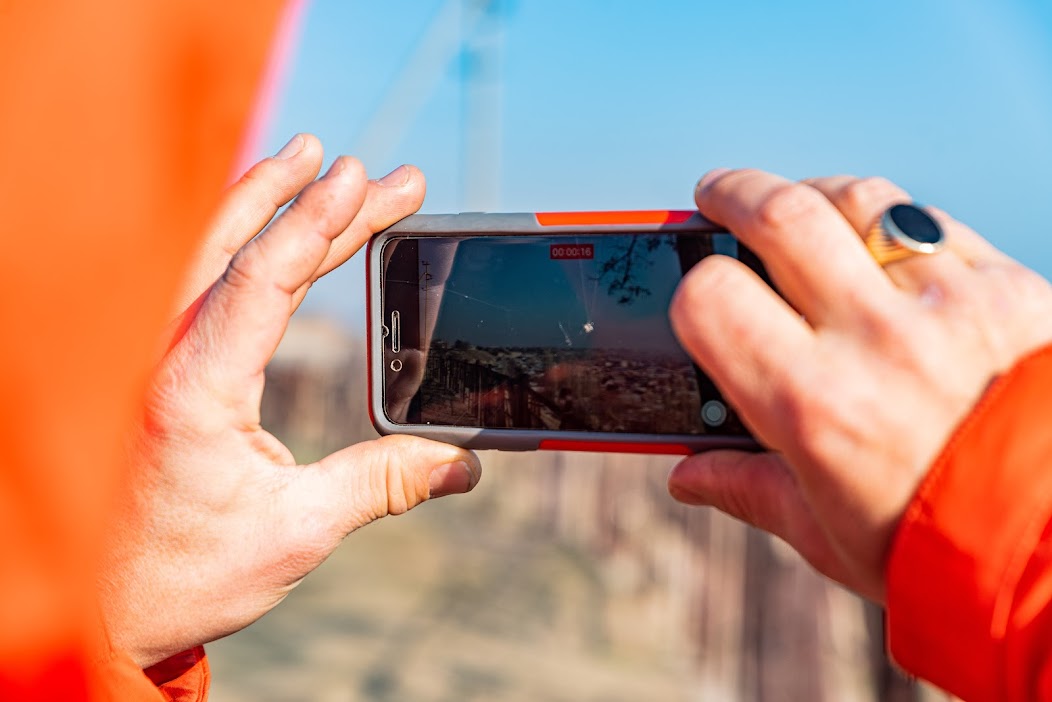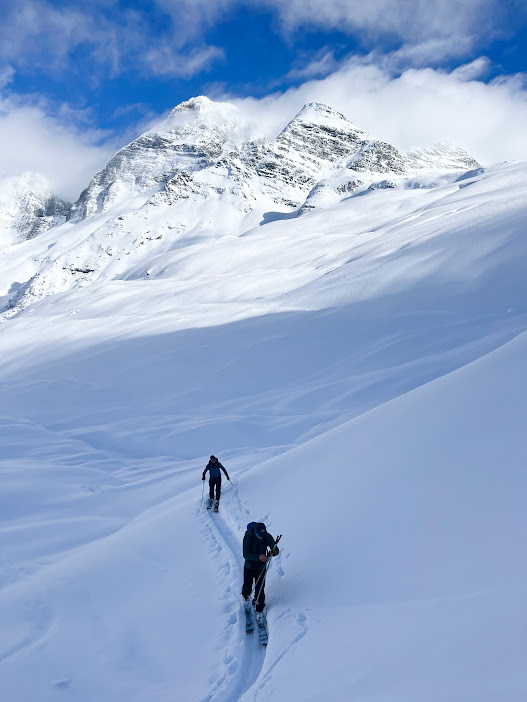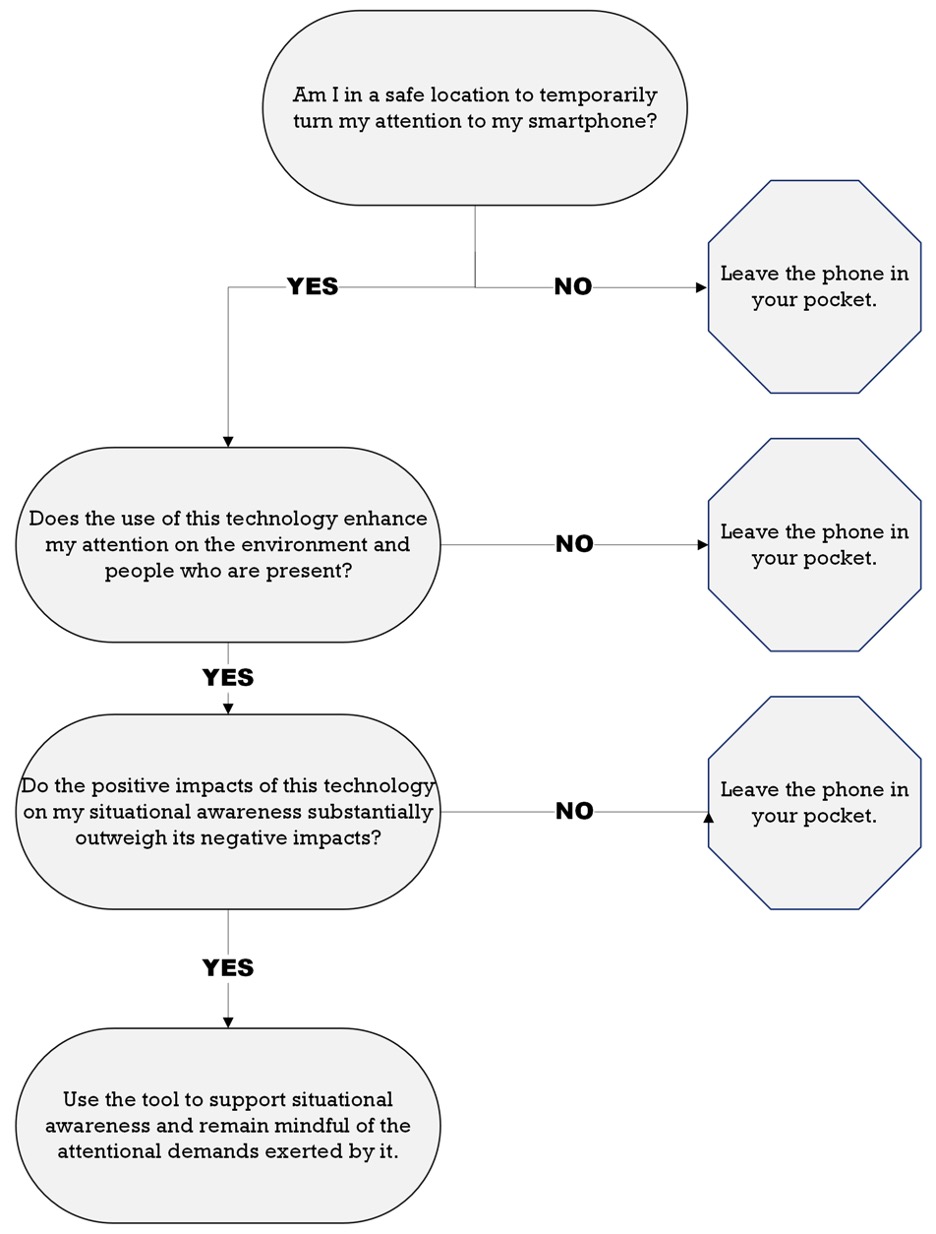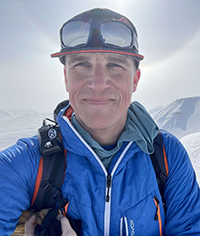Smartphones in the Backcountry: Power & Peril
Safe travel in winter mountain environments demands sustained, focused attention. Unfortunately for backcountry skiers, human attention is a finite resource. It can be drained, degraded, or distracted.
Last week I discussed digital mapping and navigation tools for backcountry skiing. These new(ish) tools offer incredible opportunities for creating efficiencies in trip planning and for previewing terrain. Once a trip is planned, the inevitable progression from digital mapping at home is to carry the digital map into the field on a smartphone – and to use the phone as a navigation tool. Despite the power of smartphones as a navigation aid, there are many good reasons why not to rely solely on smartphones for navigation in the mountains. However, one of the less discussed perils of smartphones in the backcountry is their relentless desire for human attention.
Finite, drainable, degradable, distractible, human attention.

Although smartphones provide an abundance of information for users, this information is not all beneficial; it can be incredibly useful or utterly trivial. The smartphone in our pocket during a ski tour can provide vital knowledge about the snowpack, weather, and terrain (great!), but it can also provide distracting memes, text messages, emails, and social media posts of everyone in our networks (less great?). These distractions may seem trivial, but they are powered by increasingly sophisticated, “hyper targeted” algorithms that are designed to capture and retain a user’s attention.
The challenge faced by backcountry travelers is to efficiently allocate attention between competing information sources. In the 1970s, well before the advent of smartphones and social media, computer scientist and Nobel laureate Herbert Simon theorised the concept of the “attention economy”. Simon presciently identified the modern dilemma which also applies to information technology in avalanche terrain:
In an information-rich world, the wealth of information means a dearth of something else: a scarcity of whatever it is that information consumes. What information consumes is rather obvious: it consumes the attention of its recipients. Hence a wealth of information creates a poverty of attention and a need to allocate that attention efficiently among the overabundance of information sources that might consume it.
Writing more recently, Alan Jacobs frames the problem as, “the question of what I should give attention to is inseparable from the question of what I should decline to give attention to”.
To illustrate the challenge posed by the overabundance of information in avalanche terrain – and the competing attentional demands of smartphones and social media – consider the multifaceted elements of situational awareness in the backcountry: sustained, focused attention on the environment and the people who are present.
 Ski touring in Rogers Pass, British Columbia. J.Isaak photo.
Ski touring in Rogers Pass, British Columbia. J.Isaak photo.
Environmental factors in the backcountry – especially in avalanche terrain – include terrain and route, snowpack and avalanche, and weather. Human factors for the people present include but are not limited to: mental and physical health, fatigue, distraction, and fear and anxiety.
In order to maintain situational awareness as a ski guide – when I am traveling in avalanche terrain – I seek relevant environmental and human factor information through regularly asking myself a series of questions:
● Terrain and route:
- What is the slope size, angle, and shape?
- Where am I in relation to the terrain?
- Where did I come from today?
- Where am I now?
- Where do I want to go?
● Snowpack and avalanche:
- Have I seen recent avalanches, wind loading, heavy snow or rainfall, significant warming, or signs of unstable snow?
- How likely is this snow to avalanche?
- How big would the avalanche be?
- What are the consequences if I am wrong?
● Weather:
- How has recent weather (especially wind and temperature) impacted the snowpack?
- What impact does the current weather have on the people who are present (including myself)?
- What is the weather likely to be like over the coming hours/days?
- What are the consequences if I am wrong?
● People (myself and others):
- Wellness: What is the state of our mental and physical well-being?
- Fatigue: Are we (becoming) fatigued, hungry, dehydrated?
- Distraction: Is our attention present or distracted?
- Fear and anxiety: Am I/is anyone here feeling afraid or anxious?
The answers to every of those questions are important and – to make things even more complicated – are likely to change throughout a day or even over a few hours. Clearly, I need my full attention to gather information and maintain situational awareness in avalanche terrain; the problem is that smartphones and social media are designed to capture and retain our attention. With our limited cognitive resources, human beings struggle to effectively switch attention between tasks. We simply don’t have the capacity to be fully present online and on the mountain at the same time.
 TRU Adventure Studies ski touring student in class on the mountain. Canadian Rockies. J.Isaak photo.
TRU Adventure Studies ski touring student in class on the mountain. Canadian Rockies. J.Isaak photo.
While there are evidently both benefits and potential hazards to smartphones and social media use in the context of travel in avalanche terrain, backcountry travelers need more options than simply to embrace or reject technology.
I'm certainly not advocating for the elimination of smartphones in the backcountry. But it is clear that the application of new technologies in the mountains should be engaged thoughtfully and that these technologies should serve humans – not the other way around.
However, instead of a dichotomy – either reject or embrace – there is an increasing argument for outdoor adventurers to consider a nuanced spectrum of the positive and negative impacts of smartphones and social media and make individual decisions based on their unique circumstances. The challenge for backcountry skiers is that avalanche terrain is an incredibly complex and uncertain context, where environmental and human factors now compete for our attention.
What information should we give attention to and what should we ignore? How can users harness the power of smartphones in avalanche terrain while minimizing the peril?
The following decision tree is one example of a process that can be used to support groups or individuals who are considering the use of smartphones and social media in avalanche terrain:

The baseline requirement for traveling in avalanche terrain is situational awareness through sustained, focused attention given to the environment and people who are present. Information provided through smartphones may enhance users’ situational awareness in the backcountry or the abundance of information and possibilities for distraction may limit attentional resources and reduce situational awareness. In most cases, technology is likely to provide both positive and negative impacts on our outdoor experiences. The process of questioning the use of technology in avalanche terrain with a decision-tree requires individuals and teams to consider if the tool (in this case a smartphone) supports their objectives in their specific contexts and if the positive impacts substantially outweigh its negative impacts. Effective use of this process will likely require practice and experimentation, and the questions on the decision tree may need to be adapted for specific groups or contexts. The critical element of this decision-support tool lies not in the specific questions, but in the value of slowing down to consider the spectrum of impacts of technologies in avalanche terrain.
For the millions of people who pursue outdoor adventure in wintery mountain environments, mobile technology and social media represent both power and peril: the power of accessing a wealth of information and the peril of a poverty of attention to our immediate surroundings.
Despite their incredible ability to assist users to access information about mountain environments, we must be aware that by design, “our most popular information technologies exert a subtle, persistent pressure on our psyches to look away from the world before us”.
For backcountry skiers, giving our attention to the world before us is exactly what is required.
Portions of this article were drawn from my chapter “The Power and Peril of Smartphones and Social Media in Avalanche Terrain” in the upcoming Routledge Handbook of Mobile Technology, Social Media and the Outdoors (2024).
Jerry Isaak is an Associate Teaching Professor and the program lead for ski touring in the Adventure Studies Department at Thompson Rivers University in Kamloops, British Columbia. He is an AMGA certified Ski Guide and has guided backcountry ski adventures in Iceland, Kyrgyzstan, Japan, and throughout the United States and western Canada.








